Introduction:
In today’s competitive digital landscape, it has become crucial for businesses to manage as well as deliver their content efficiently. For this, they depend on the best CMSs- Content Management Systems. If you are new to this, then choosing one can be a challenging task as you will find dozens of options.
Though some are open source, others are commercial. Some CMSs are widely used, while other CMSs can be only used for certain purposes. So, how to pick the best one for your business?
Diving into the statistics, more than 41 percent of businesses are using monolithic or traditional CMSs. Also with the increasing demand for headless CMSs, experts have predicted that by the end of 2032, the headless CMS industry will reach USD 3.8 billion mark. These CMSs are outnumbering other technologies, offering best-in-class digital experience.
Well, we think deciding this will be easier for you when you know the difference between Headless CMS vs Traditional CMS.
Read on to explore more about this and decide which one can be the right option for your requirements.
Understanding Headless CMS and Traditional CMS
What is a Traditional CMS?
In the traditional CMS, the front end and the back end are connected directly to each other. This allows users to create, modify, and manage their websites without the need for any specialized technical knowledge. With this, you can update the content easily without worrying about the process of moving files or content with FTP, etc. While using a traditional CMS like WordPress, you can use various plugins to add new functionalities and features to a website.
What is a Headless CMS?
In the case of a headless CMS, the backend and front end can be managed separately. Here, developers can use the content using APIs. This CMS doesn’t affect or have no impact on the website’s front end. Using a headless CMS, you can deliver your content in different ways. The content can be published through an API. As you will have a single backend, it will give you the freedom to customize content as per the need.
While a traditional CMS offers ease of use, it lacks flexibility. On the other hand, a headless CMS requires technical expertise. Let’s know more about Traditional CMS vs Headless CMS to come up with an informed decision.
Major Differences Between Traditional and Headless CMSs
Each Content Management System has its own unique purpose and this, in turn, influences their flexibility, ease of use, architecture, etc. Some important differences between these two CMSs are:
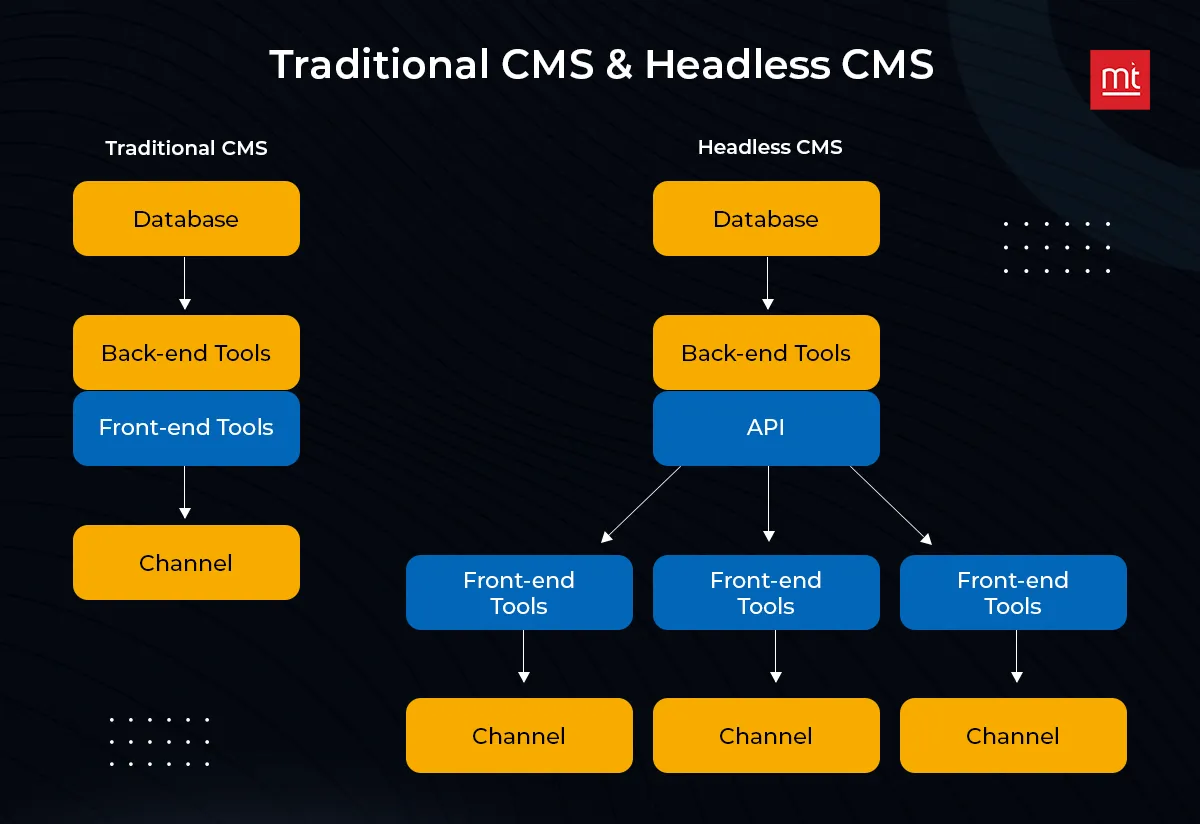
#1. Architecture:
Traditional CMSs use a monolithic architecture. That means the back-end code needs to be linked with the front-end. If you need to add any functionality, you will have to use plugins. On the other hand, a headless CMS comes with a decoupled architecture. The back end is independent of the front end. Using APIs, developers can integrate as many front ends as they need to enjoy omnichannel publishing.
#2. Purpose
Traditional CMSs come with pre-built design templates and anyone can create as well as update websites easily. With this, you can lower your website development cost. However, it may increase the risk of work duplication and you can only publish content for a particular channel, like a website.
While using a headless CMS, you don’t need to reformat or duplicate your marketing content for various channels. You can store all the material in just one repository that publishes content to different channels, such as mobile apps, IoT devices, etc.
#3. Development Flexibility
In a headless CMS, as it uses decoupled architecture, you can opt for any programming language, framework, or technology stack to create front-end applications. As a result, you will have more freedom in designing a better user experience. Besides, headless CMSs are scalable. More than 58 percent of organizations have informed that shifting to headless CMSs has increased their productivity.
On the other hand, traditional CMSs have some limitations in terms of scalability and customization. The reason behind this is they are designed with certain themes and templates.
#4. Development Speed
As headless CMSs have pre-built themes and a comprehensive set of useful tools, developing an application or website using these CMSs will be quicker and easier. There is no need to build a site from scratch. But in the case of headless CMSs, you need to develop a website from scratch. You can use your desired framework, but it takes time and requires more development efforts.
Have a look at the table below to get a clear idea about some more major differences:
Factors | Traditional CMS | Headless CMC |
Architecture | Monolithic | Decoupled or Modular |
Development Speed | Faster Than A Headless CMS | Takes Time |
Development Flexibility | Less Flexibility | Unlimited Flexibility |
Security Level | Decent Security | Can Be Increased Using Plugins |
Future Proof | No | Yes |
Maintenance Requirements | Low | High |
Scalability | Low | High |
Pros and Cons of Headless CMSs and Traditional CMSs
Pros of Using Headless CMSs
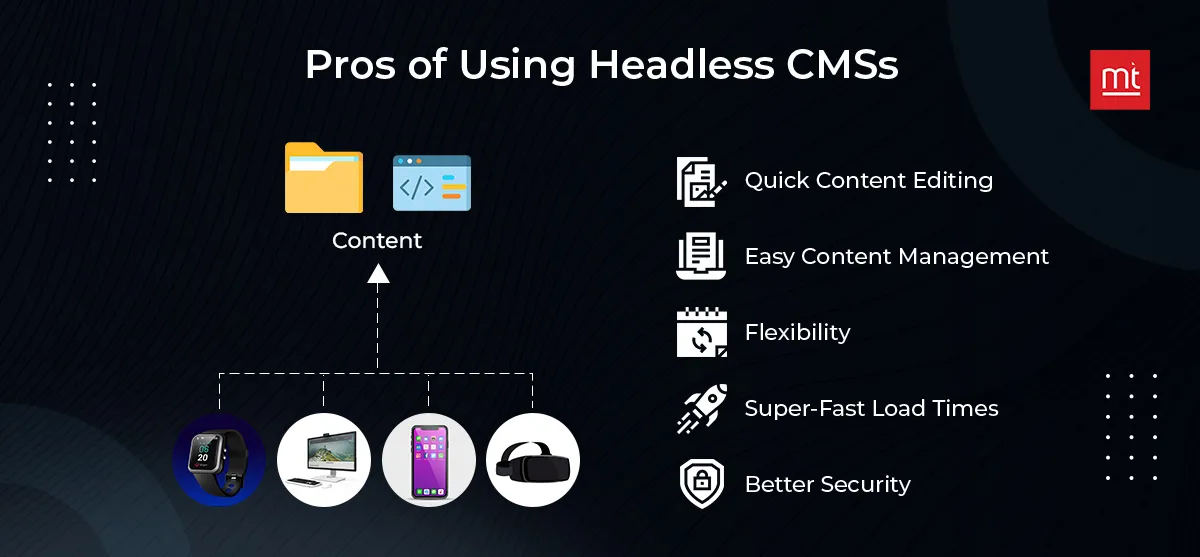
- Quick Content Editing: Headless CMSs allow you to create new content format quickly, to increase end-user experience.
- Easy Content Management: You can choose your desired front-end application to deploy, an IoT device, a mobile app, or a website. The content of all these channels can be managed from a single hub.
- Flexibility: Developers can choose the frontend tools, languages, or frameworks, based on their skill set and your business requirements.
- Super-Fast Load Times: A website created using a headless CMS will load faster and offer better Google Lighthouse results, leading to increased SEO and higher conversions.
- Better Security: As the front end is separated from the back end securely, there will be a small attack surface in a headless CMS.
Cons of Using Headless CMSs

- Requires Technical Skills: Integrating a headless CMS with the app or website or creating one from scratch requires certain development skills. For a non-technical user, it will be challenging to manage the content without hiring a dedicated CMS development team.
- Requires More Setup Time: You may need to spend more time to setup a headless CMS and running as the front-end and back-end are handled separately. Initially, this can lead to extended project timelines.
- A Costly CMS: Some headless CMSs are free and open-source, but you may need to spend money on some premium features, customizations, and integrations. It is hard to predict the expenses while using a headless CMS.
Pros of Using Traditional CMSs
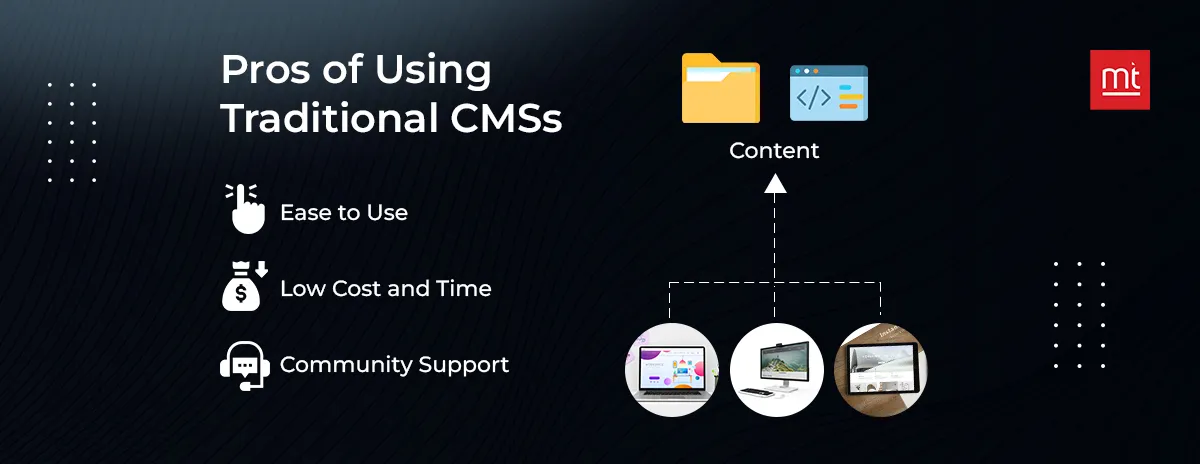
- Ease to Use: They allow you to easily create an easy-to-manage app or website architecture along with a better administration interface. You can manage the channel with a few simple clicks.
- Low Cost and Time: You can find themes or templates that are free to use and can be modified quickly. You can also use various plugins to customize your website within a few hours.
- Community Support: Most traditional CMSs come with a vast user community. That means you can easily find a huge set of themes, plugins, and resources online to enhance your site’s user experience.
Cons of Using Traditional CMSs

- Less Flexibility: Some temples and themes designed for traditional CMSs are quite rigid and restrictive, making it nearly impossible to come up with a unique design.
- Regular Maintenance: You need to update the resources regularly to keep the site aligned with new web standards and secure. Sometimes, you may face issues like asynchronization between plugins, themes, and the CMS.
- Scalability Issues: A traditional CMS may not be able to keep up when your app or website receives more visits. For scaling, you may need more sophisticated solutions and extra development work.
Above, we have discussed traditional and headless CMSs and their pros and cons. Now, for more clarity and to help you choose the right one, we have listed down some important factors that you should consider to ensure you have the best CMS for your business. Have a look.
How to Choose the Right CMSs For Your Business?
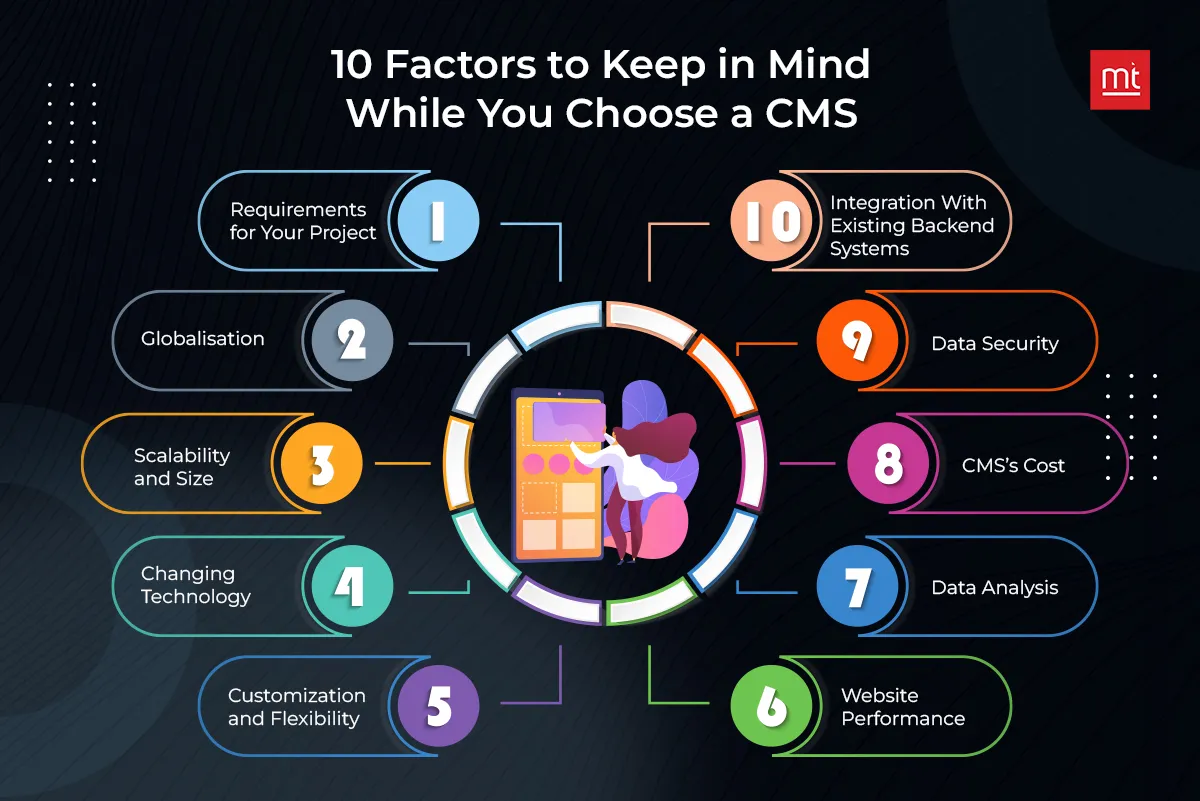
Requirements for Your Project
Before choosing one, you need to think about the content type you want to manage. Is it about videos, text, images, or a combination of all these things? What will be your channel; mobile app, website, or IoT devices? It will be better for you to choose one that can offer maximum flexibility when it comes to delivering content.
Globalization
If you are thinking about expansion, then your CMS should have the ability to streamline the workflows and can provide the users with content in different tones and languages to effectively connect with them at a local level.
Scalability and Size
Always consider the current size of your business and your projected growth while selecting a CMS. While a small business with limited resources can opt for a traditional CMS, the scalability of a headless CMS can be very helpful for a business that manages multiple online projects. If you have long-term growth planning, then go for a headless CMS.
Changing Technology
The landscape of technology is changing constantly and also getting more complicated. That’s why the CMS you choose should be capable and flexible enough to work flawlessly with technologies, like machine learning, automation, artificial intelligence, and automation.
Customization and Flexibility
Flexibility can be crucial for your business if it has some unique requirements and needs frequent changes. If you are focusing more on these factors, then a headless CMS will be an ideal option as it allows for more detailed customization.
Website Performance
A website’s user experience can be influenced by various performance metrics such as SEO or load time and you can’t compromise with these things. When using a traditional CMS, you can enhance the performance using plugins, but integration of multiple plugins can also slow down your site. With a headless CMS, you won’t face such issues and it offers better load times.
Data Analysis
Analyzing and understanding data can help you connect with your customers. Ensure that the CMS you choose can offer comprehensive data analytics to assist you manage the data. Besides, your CMS can be integrated with different third-party services and plugins such as Google Analytics, Matomo, or Jetpack to simplify data monitoring.
CMS’s Cost
Understand your budget and consider different factors such as implementation, licensing costs, upgrades, updates, optimization, and more. Know your investment tolerance level and choose accordingly.
Data Security
It takes a lot of time and effort to create and maintain a website. You will never want to deal with a situation where a security breach impacts your visitors’ data, your content, and your reputation. It can take months or years to recover from such an issue. So, it is important to ensure that the CMS you are considering has better security features and supports the integration of third-party privacy software to make it more robust and secure.
Integration With Existing Backend Systems
To gain maximum benefit from your CMS, your existing systems need to be properly connected to the CMS. This way you can offer memorable digital experiences to your visitors. Besides, this feature will also allow you to offer an omnichannel experience. Go for API-powered or open-source options to share content across marketing automation solutions, CRM, e-commerce platforms, etc.
Selecting a perfect CMS for your business is the right balance of forecasting future needs and knowing your current business requirements. While there are more such factors to consider, weighing these mentioned factors can help you make a choice that aligns perfectly with your business.
What Are The Best Traditional and Headless CMSs You Can Try?
Let’s assume you want to use a traditional CMS. But which one should you go for? When it comes to choosing the best traditional CMSs, the first option will be WordPress. It is currently dominating the global CMS market, by powering around 45 percent of all running websites.
Another popular option is Joomla with more than 2 million active users. Besides, this CMS offers 8000+ extensions. You can also opt for Drupal. These CMSs can be an excellent choice for small businesses. For enterprise-level or large corporation projects, you can go for TYPO3. It is a scalable, fully featured, and powerful CMS that is managed and regularly updated by top-notch developers.
If you are planning to give headless CMSs a try, you can go for Grav, Contentful, ButterCMS, Strapi, Sanity, and Contentstack.
How can ManekTech help you develop a Headless CMS?
If you are in search of a professional to help you with a powerful Headless CMS strategy, you must consider Manektech as a priority. As, we at Manektech make sure that our clients get a unified development experience and grow with us.
We are fully equipped with talented content managers who know the tricks and traits to keep your website growing every day without facing any downtime. We serve our clients with excellence. To know more visit Manektech today!
The Final Words
Choosing the best Content Management System is not just a part of your business, it is an important long-term strategy that can greatly influence and impact your business’s ability to deliver personalized and exceptional customer experiences through multiple channels. While both these options are popular, more businesses are now shifting towards headless CMSs. It can be a strategic move to future-proof your business. Such CMSs offer adaptable frameworks and can make integrating the latest front-end technologies easier for developers.
Furthermore, a headless CMS can provide you with some major performance advantages like better SEO, faster page load time, scalability to deal with increasing traffic demands, and less stress on your backend servers. So, what are you thinking now? Partner with a reliable Custom CMS Development Company in USA and create a website using a headless CMS that will support and constantly grow with you. Besides, they can also help you migrate to a headless CMS from a traditional CMS while preserving the website’s functionality and content integrity.

About Author
Subscribe to Our Newsletter!
Join us to stay updated with our latest blog updates, marketing tips, service tips, trends, news and announcements!


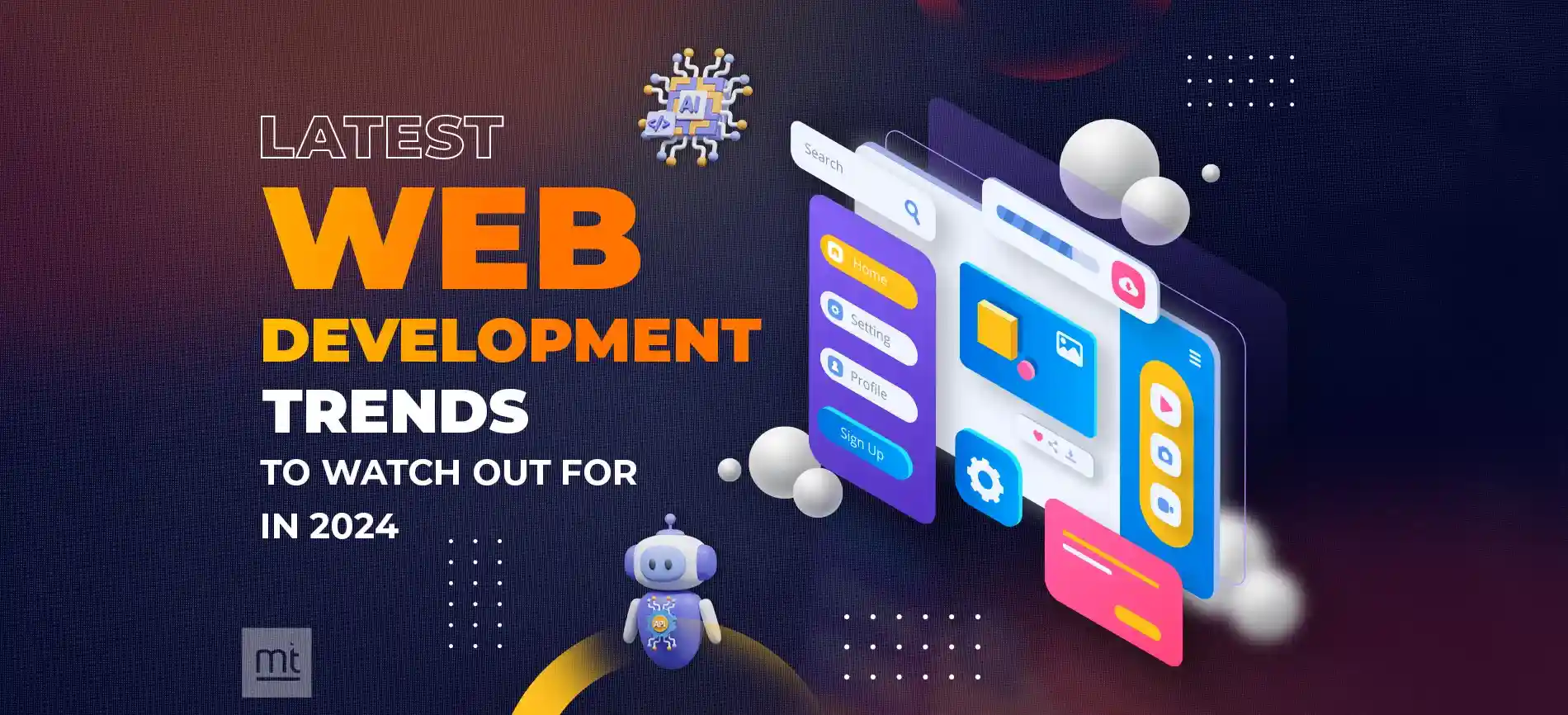
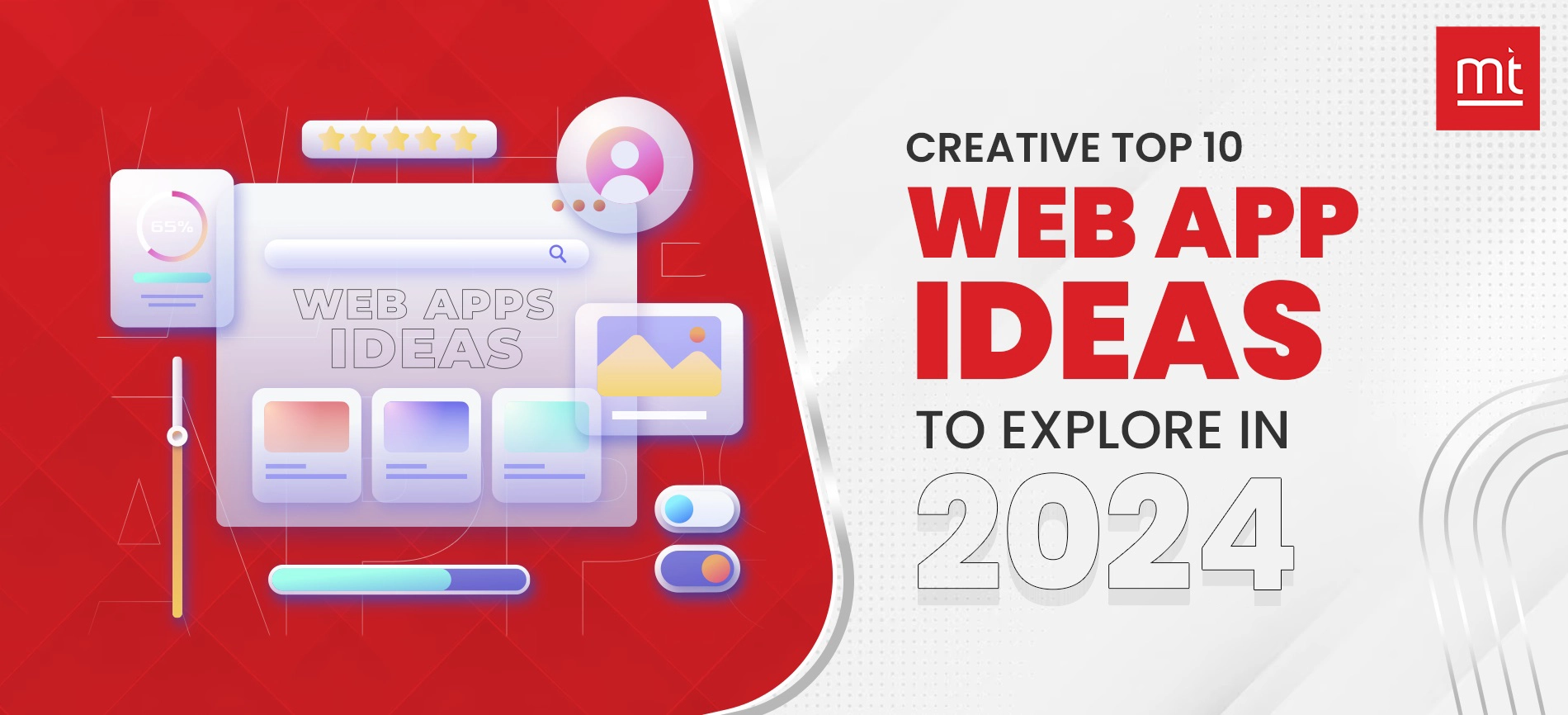
![How Much Does It Cost to Develop a Website in 2024? [Checklist]](https://www.manektech.com/storage/blog/image/1700562973.webp)















